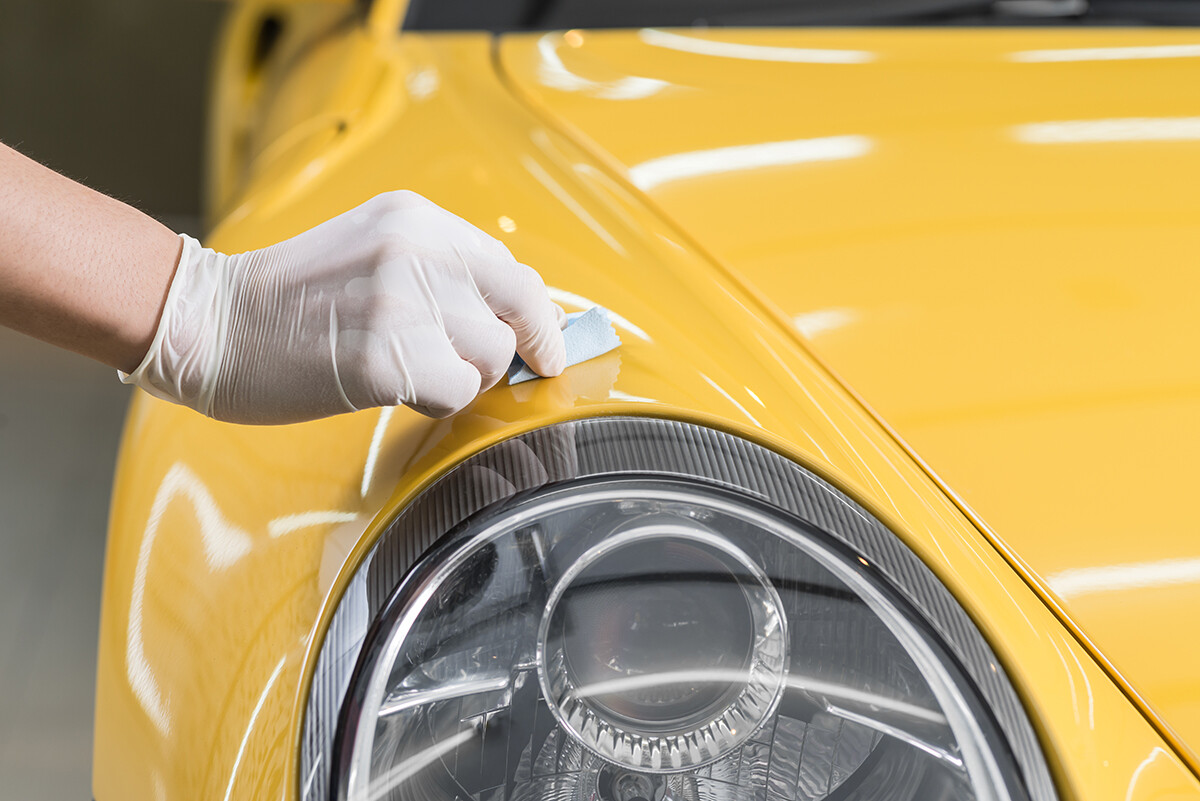Ceramic Coatings San Jose: Enhance and Safeguard Your Car's Finish
Ceramic Coatings San Jose: Enhance and Safeguard Your Car's Finish
Blog Article
Introducing the Science Behind Ceramic Coatings: How Does It Work and Why Is It Above Traditional Choices?
Ceramic layers have been acquiring appeal in numerous markets for their phenomenal efficiency and toughness. Understanding how ceramic layers job and why they exceed conventional alternatives is important for those seeking to boost the durability and resilience of their products.
The Chemistry of Ceramic Coatings
In understanding ceramic coverings, delving right into the detailed chemistry behind their make-up is essential for understanding their performance and sturdiness. Ceramic coverings are primarily made up of silicon dioxide (SiO2), which forms a solid and protective layer when applied to numerous surfaces. This chemical framework provides outstanding resistance to warm, chemicals, and deterioration, making ceramic finishings highly looked for after for a large range of applications.
The chemistry behind ceramic finishings entails the formation of covalent bonds in between silicon and oxygen atoms, developing a stiff network that enhances the layer's strength and longevity. Additionally, the existence of other components such as aluminum, titanium, and zirconium additional enhances the coating's residential or commercial properties, using boosted hardness and attachment to surfaces.
Comprehending the chemical make-up of ceramic layers enables the modification of solutions to suit particular requirements, whether it be for auto, commercial, or property functions. By using the power of chemistry, ceramic coatings continue to lead the way for remarkable defense and efficiency in numerous markets.
Advantages of Ceramic Coatings

As an outcome, ceramic layers make cleaning and preserving surface areas a lot easier and less lengthy. Generally, the wide range of advantages supplied by ceramic coatings make them an exceptional choice contrasted to traditional finish approaches.
Just How Ceramic Coatings Bond
Ceramic layers bond to surface areas with a procedure that involves molecular attachment and chemical communications. When a ceramic layer is used to a surface area, it creates a solid bond by chemically sticking to the surface area at a molecular level.
Furthermore, the chemical interactions between the ceramic finishing and the surface further boost the bond. ceramic coatings san jose. These communications enable the ceramic finishing to produce a continual and seamless layer externally, more offering outstanding protection and sturdiness. Unlike conventional coatings that might rest on the surface area without completely bonding, ceramic coverings develop a long-term bond that is immune to chemicals, UV rays, and severe environmental conditions

Fundamentally, the bonding mechanism of ceramic layers ensures a reliable and resilient safety layer that outperforms typical finish options. This premium bond contributes to the sturdiness, scratch resistance, and longevity of ceramic finishes, making them a preferred selection for various applications.
Longevity of Ceramic Coatings
The exceptional long life of ceramic finishings stems from their robust molecular attachment and chemical interactions with surfaces, making certain a resilient safety layer that surpasses standard coating choices. When used, ceramic coverings develop a solid bond with the substrate, developing a durable barrier against numerous environmental stressors such as UV radiation, chemicals, and abrasions. This bond is so safe that it can endure the roughness of daily use without degrading or degrading rapidly.
Unlike traditional finishes that may deteriorate over time, ceramic finishings maintain their integrity for an extended period, offering long-lasting protection for the underlying surface area. On the whole, the exceptional durability of ceramic finishings makes them a premium choice for safeguarding a wide range of surface areas in different applications.
Ceramic Coatings Vs. Conventional Options
In comparison to traditional coating methods, ceramic finishes supply a distinct mix of resilience and protective abilities that establish them apart in different surface area security applications. Standard alternatives such as wax or sealants provide a short-term layer of security that can diminish swiftly, needing constant reapplication. On the various other hand, ceramic coverings form a strong bond with the surface, developing a semi-permanent or permanent obstacle that is highly resistant to abrasion, chemicals, UV rays, and severe temperature levels.
Additionally, ceramic coatings offer premium hydrophobic residential or commercial properties contrasted useful reference to traditional coatings. The hydrophobic nature of ceramic coverings triggers water to grain up and roll off the surface, bring dust and pollutants with it. This self-cleaning impact helps to maintain the surface's tidiness and gloss for extended durations, lowering the requirement for constant maintenance.
Additionally, ceramic layers have a thicker layer compared to standard choices, supplying enhanced scratch resistance Get the facts and security versus minor impacts. This resilience guarantees durable performance and helps protect the visual charm of the dealt with surface area for an extensive duration.
Verdict
In conclusion, the scientific research behind ceramic finishings lies in their chemical make-up and bonding buildings, making them superior to traditional options. The benefits of ceramic layers consist of raised longevity and security for surfaces. By understanding how ceramic coverings job and their advantages over traditional choices, one can make informed decisions when considering finish choices for different applications.
Unlike typical finishes that may sit on the surface without completely bonding, ceramic coverings develop a long-term bond that is immune to chemicals, UV rays, and extreme ecological problems.
The phenomenal longevity of ceramic coverings stems from their durable molecular adhesion and chemical interactions with surface areas, making certain a resilient safety layer that exceeds typical finish alternatives.Unlike standard finishings that might weaken over time, ceramic coatings keep their stability for an extended duration, supplying long-lasting protection for the underlying surface area.In comparison to traditional finishing techniques, ceramic finishes offer an unique mix of resilience and protective abilities that establish them apart in numerous surface area protection applications. By understanding how ceramic finishes work and their benefits over conventional alternatives, one can make informed choices when considering finish options for different applications.
Report this page